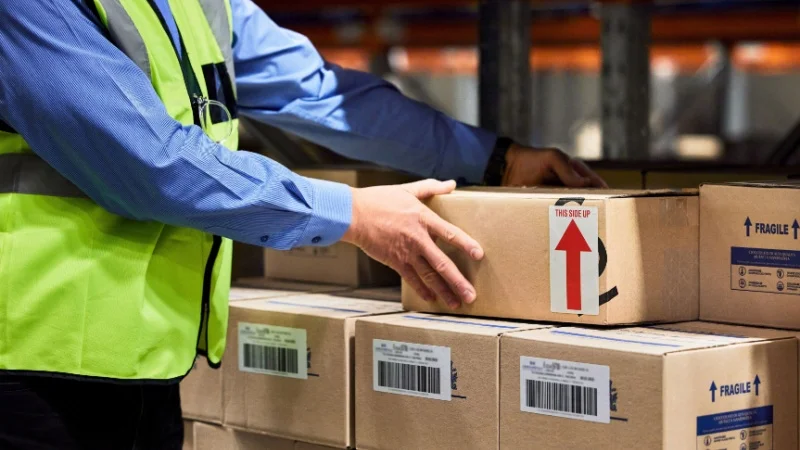Shipping goods over long distances by ocean, air, or land introduces significant challenges for many shippers. Finding the right packaging that ensures product safety and security while being economical and space-efficient can be difficult. Selecting the best cargo packaging requires thorough research and experience. Without guidance from a reputable shipping company, your cargo could end up damaged, spoiled, or in poor condition. If you’re planning to ship your freight, get ready to discover various types of cargo packaging available!
Importance of Cargo Packaging
- Protection: The primary purpose of cargo packaging is to protect goods from damage during transport. This includes safeguarding items from physical impacts, moisture, dust, and temperature fluctuations, and ensuring compliance with dangerous goods packaging regulations.
- Efficiency: Well-designed packaging can optimize space in shipping containers or trucks, allowing for more efficient loading and unloading. This reduces transportation costs and maximizes the use of available space.
- Safety: Proper packaging helps ensure the safety of workers handling cargo. It minimizes the risk of injuries caused by shifting loads or falling items.
- Sustainability: With growing environmental concerns, sustainable packaging solutions have become increasingly important. Using recyclable or biodegradable materials helps reduce waste and the carbon footprint of shipping operations.
- Compliance: Many industries have strict regulations regarding packaging, especially for hazardous materials. Proper packaging in cargo shipping boxes ensures compliance with these regulations, avoiding potential fines and legal issues.
8 Types of Cargo Packaging
There are various types of cargo packaging, each with its own set of advantages and disadvantages. Below are some of the most common types used for shipping different commodities over long distances.
1. Cardboard/Fiberboard
Cardboard boxes, made from fiberboard, are essential for cargo packaging. There are two main types of cardboard boxes – brown paperboard and white paperboard. The former is made from recycled paper and is ideal for light-sensitive items, while the latter is developed from virgin paper, providing greater protection and is suitable for items requiring special handling.
There are three main types of cardboard packaging:
- Corrugated Cartons: Affordable and recyclable, ideal for food and non-breakable items.
- Double-Walled Corrugated Cartons: Used for heavy items, providing extra protection during transport.
- Double Cartons: Designed for fragile items like glass and porcelain, these require careful wrapping and layering in shipping boxes.
2. Bagged Cargo
Bagged cargo refers to items packaged in bags, typically used for smaller goods that require protection from environmental factors and damage. This type of cargo is often loaded into containers alongside boxes, including cargo cardboard boxes or crates, and shipped via truck, train, or plane. Common examples of bagged cargo include fertilizers, grains (like rice, corn, and wheat), seeds, dried fruits, sugar, coconut, coffee, fresh produce, flour, copra, and smaller items such as shells and raisins.
3. Wooden Cases
Wooden cases are a popular choice for cargo packaging because of their durability and versatility. These cases are produced from high-quality woods such as oak, mahogany, solid wood, or plywood, and are suitable for transporting heavy machinery, electronics, and artwork. The strength of wooden cases provides excellent protection during transport, even for items that require special handling, such as dangerous goods. Additionally, the lightweight design makes them easy to manage. However, wooden cases can be expensive and may not always be readily available.
4. Wooden Crates
Wooden crates are a common choice for shipping heavy or oversized cargo. Constructed from plywood or lumber, these crates are secured with nails, screws, or bolts and can be customized to fit the dimensions of the items being shipped. They provide excellent protection against impact and vibration during transit and can be easily stacked, making them ideal for sea freight packaging of items such as machinery, appliances, and furniture.
5. Steel Drums
Steel drums are a versatile cargo packaging solution, typically in a cylindrical shape and welded shut, usually with a capacity of 55 gallons. They are commonly used for transporting oil, chemicals, and various liquids, and storing food products like flour and sugar. Their durability allows them to withstand the rigors of shipping and handling, while their stackable design facilitates efficient storage and transport.
6. Bales
Bales are large, compressed blocks of material wrapped in plastic or water-resistant materials, commonly made from hay, straw, paper, cardboard, cotton, and wool. They offer an efficient and cost-effective way to package and transport large quantities of goods and are easily stackable. The use of plastic films in bale packaging enhances flexibility, allowing producers to effectively meet retailer stock demands while also exploring options for eco-friendly packaging to reduce environmental impact.
7. Palletizing Cargo
Palletizing is a cargo packaging method that involves placing goods on a pallet and securing them for transport, providing benefits like enhanced safety, efficiency, and security. This method reduces damage during transit, simplifies loading and unloading, and optimizes space in shipping containers. There are six standard pallet sizes used in global trade, ensuring compatibility across regions of North America, Europe, Asia, and Australia.
8. Containers
Containers are standardized rectangular boxes used for transporting goods by ship, train, or plane, also known as intermodal containers due to their versatility. There are two main types: dry containers, typically made of steel or aluminum for non-perishable goods, and refrigerated containers (reefers), made of stainless steel with insulated walls for perishable items. Both types are commonly available in 20-foot and 40-foot sizes, making them ideal for sea freighting services to facilitate global trade efficiently.
Effective cargo packaging is essential for safe and efficient shipping. By choosing the right materials and methods, businesses can protect their goods, reduce costs, and meet regulatory requirements. As the industry continues to evolve, staying updated on packaging options will be key to ensuring smooth and successful transport of products worldwide. The expert team of Travelite ensures your goods are safely packed for every journey, providing reliability and peace of mind. Choose us for efficient and secure cargo packaging that truly delivers!










